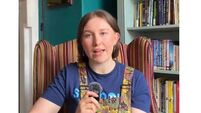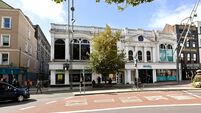The climate conundrum
“Our capacity for self-deception is breathtaking.”
“Energy use begets energy use,” writes Owen, a disciple of William Stanley Jevons, the 19th century British economist who argued that more efficient exploitation of a resource leads to increased demand for said resource. In theme and variations fashion, Owen applies the Jevons’ principle to waste disposal, public lighting, aviation, water supplies, and the claims of the ‘solar evangelists’.
Owen’s favourite example is the motor car — “Global Environmental Enemy No 1” — which manufacturers make increasingly comfortable, safer and cheaper to run. “The last thing the world needs is an inexpensive car,” says Owen. “More cars mean more roads, more roads mean more suburbs and more suburbs mean more environmental damage in every category.”
US cars “transport air conditioning”, Owen’s other pet hate, “between buildings”. The traffic jam is “a rescue service”.
New York has the greenest community in the US. Your typical citizen’s carbon footprint is 30% lower than the national average. New Yorkers are the country’s only significant users of public transport. Few people have cars. They walk. With no spare rooms to store junk, they acquire fewer things. Increasing population density reduces environmental impact. People should live cheek by jowl.
Vermont, on the other hand, is seen as America’s greenest state. For Owen, it’s an ecological disaster of car abuse and suburban sprawl. “We need to live smaller, live closer and drive less.” Traditional conservationists, opposed to urban development, are their own worst enemies. Demonising cities is not the answer. Trying to escape sprawl, we extend it. “Cars are consumption amplifiers. Driving is the pump which enlarges the sprawl balloon.” Improve car comfort and efficiency by 10% and commuting distances increase by 10%.
How far you live from the shop is more important environmentally than how far away the food it sells is grown. Transportation is the smallest component of food energy costs; a quarter of all energy goes on home preparation. How the food is produced is the significant element. Organic farming encourages low-yielding agricultural sprawl. Manure requires defecating animals which must be fed, usually on energy demanding foods. Farmers’ markets have huge eco-footprints. Grass-fed New Zealand lamb requires a quarter of the energy needed for grain-fed English lamb. Some 80% of agricultural land is devoted to producing meat which accounts for 20% of our greenhouse gas bill. Become a vegetarian!
The world’s main emitter of greenhouse gases is, and always has been, prosperity. Carbon footprints fall when we consume less. “You would think that not having bubonic plague would be enough to put most or us in a cheerful mood, but no, we want a hot tub,” he writes. “Modern life is mainly the product of our steadily growing talent for usefully setting things on fire — wood, coal, oil, natural gas.”
“Economic growth” and “the luxury of being able to say that our most important possessions are not material ones” are almost entirely “bi-products of burning”. The average American uses “roughly 22 pounds of coal, 180 cubic feet of natural gas, and almost three gallons of oil” each day. The average household, including its vehicles, has at its disposal the equivalent of 6,000 Roman slaves or 3,000 19th century workers together with 400 big draft horses.
Techno-optimists believe technology is solving environmental problems. Owen argues that environmental destruction has not been reduced but transferred elsewhere in the world. “The carbon and energy footprints of our imports now greatly exceed that of our exports, a new kind of trade imbalance.” We need a totally new relationship to energy and consumption.
An entertaining and provocative polemic.
* The Conundrum, How Trying to Save the Planet is Making our Climate Problems Worse, by David Owen. Short Books. £9.99.













